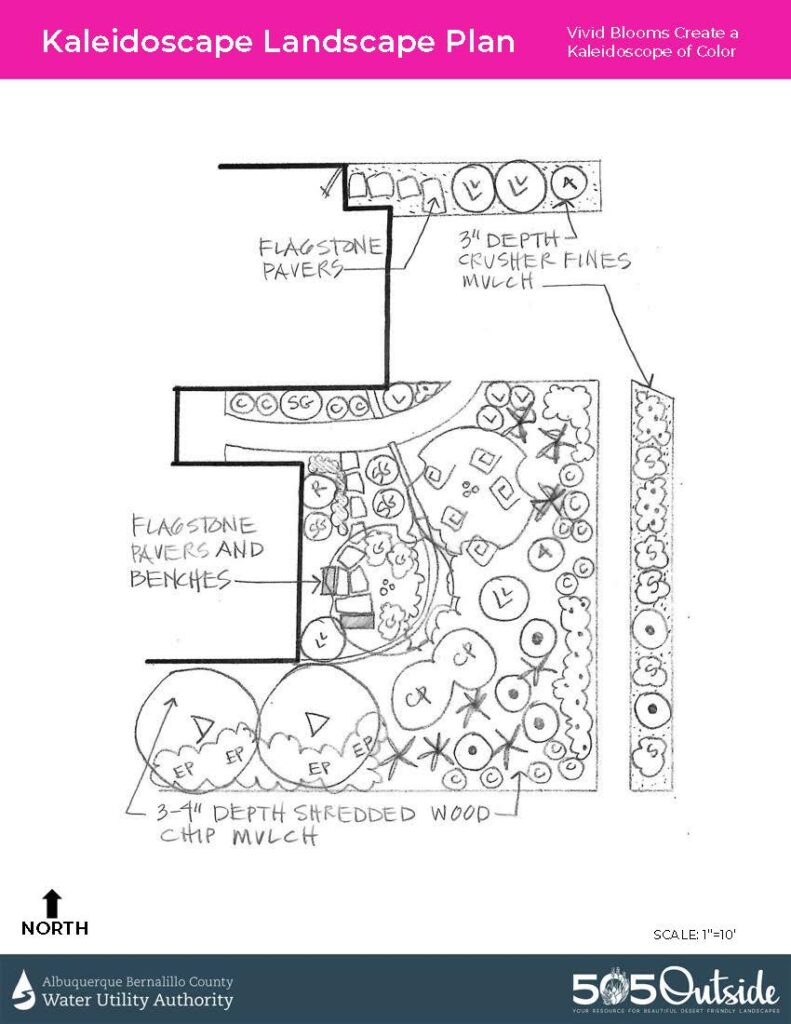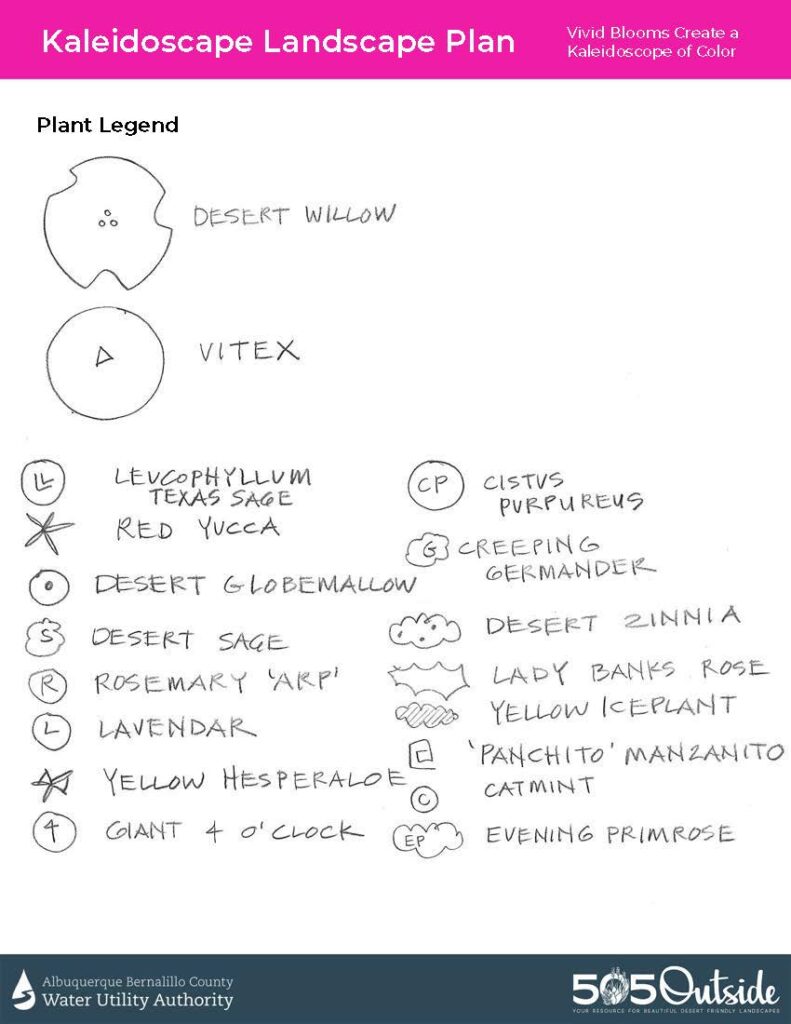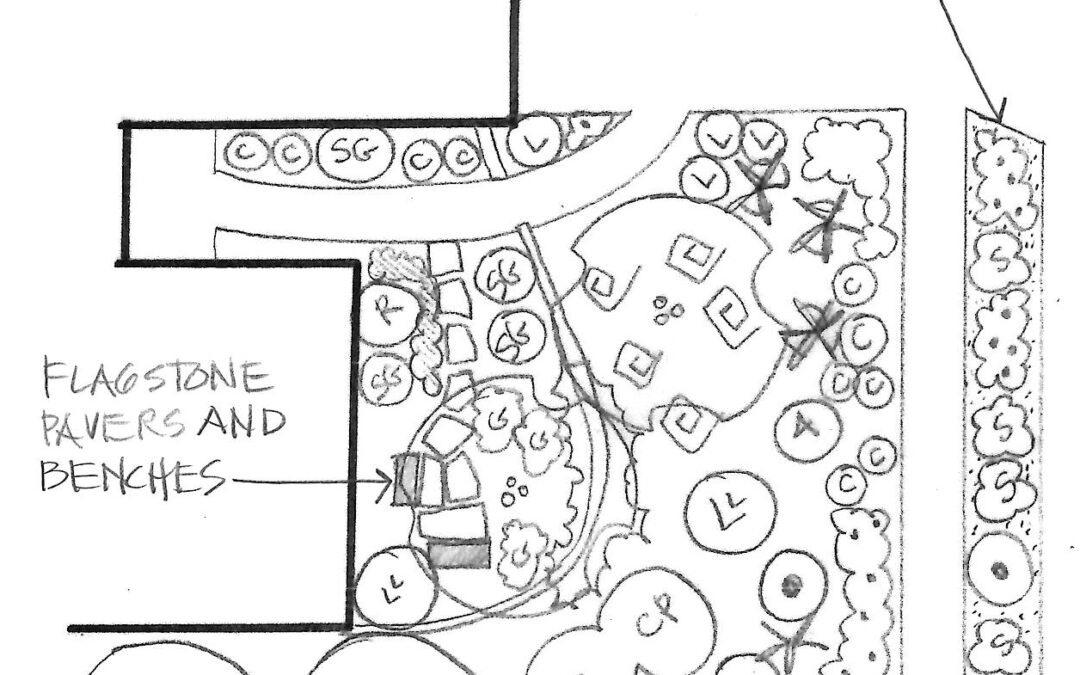Color has a more dramatic impact in a garden if plants with strong flower colors are juxtaposed against one another. In this Kaleidoscape design by Judith Phillips, the blue-purple blooms of dwarf butterfly bush, desert sage, catmint, lavender and vitex are contrasted with the rose-pink and magenta blooms of desert willow, cherry sage, creeping germander, giant four o’clock, purple ice plant, red yucca and desert globemallow. Yellow tones are provided by desert zinnia, yellow ice plant, yellow yucca and Lady Banks rose.
Using several different plants with similar color palettes prolongs the blooming season and provides unity to the landscape. While vivid color may be the appeal of the garden from spring through autumn, a landscape also needs “good bones” — enough evergreen foliage and shapely plant forms to provide interest when the blooming fireworks are over for the year. rosemary, Lady Banks rose, cliffrose, desert sage, hesperaloes and cotoneaster all contribute seasonal flower color as well as evergreen foliage in a broad range of greens and silvers to carry the garden through the colder winter months. In addition to their colorful warm season blooms, the curving trunks and branches of desert willow and vitex add sculptural value all year.


See other design templates here:
Loungescape: A Strickingly Beautiful and Low Maintenance Yard
Hotscape: An Attractive Native Landscape that Loves Heat and Full Sun
Wildscape Landscape Plan: A Celebration of Wildlife in Your Landscape
Greenscape Landscape Plan: Evergreen Plants Provide an Ever-Beautiful Front Yard
Coolscape Landscape Plan: A Cool and Calming Southwestern Oasis


